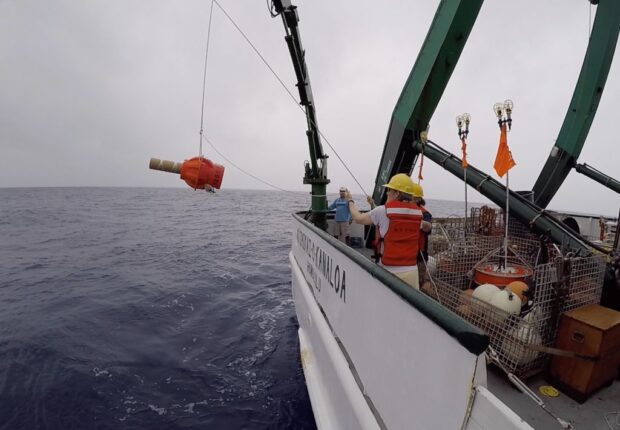New research of data collected by deep ocean robots, called Deep Argo floats, combined with historic data from research vessels confirms that parts of the global deep ocean are warming at a rate of .0036 to .0072 degrees Fahrenheit (.002 to .004 degrees Celsius) each year.
“Ocean warming is the dominant element of global warming and a major driver of climate change,” said Greg Johnson, an oceanographer at NOAA’s Pacific Marine Environmental Lab and lead author of the study, which was published in the journal Geophysical Research Letters. “This study confirms the previously reported deep ocean warming, and reduces the uncertainties about the global ocean heat uptake in waters below 1.2 miles (2000 meters), a key area of the ocean for predicting sea level rise and extreme weather.”
The research provides detailed information about the geographic patterns of deep ocean warming, helping scientists better understand changes in the global ocean conveyor belt called the global meridional overturning circulation, a key to predicting weather and climate changes.
The research revealed that the deepest ocean waters off Antarctica are a hot spot for warming.
Another hot spot of warming is in the deep ocean waters off Greenland, the research showed.
Research into deep ocean warming can help improve climate models used to prepare society for future changes in ocean and air temperatures that drive sea level increases, precipitation, tropical cyclone frequency and intensity, and their impacts on humans and the environment, the researcher said.
Johnson said that scientists first began seeing this deep ocean warming trend off Antarctica without the benefit of Deep Argo data some two decades ago. But the size of the warming trend was uncertain because of the sparse measurements available previously. The data from Deep Argo has helped to reduce the uncertainty in the size of the trend by a factor of two.
“Right now, Deep Argo consists of pilot arrays in key regions,” said Johnson. “If we can build a global array we’ll be able to quantify the warming rate over shorter periods of time to see how that rate is changing. We have hints that the rate is changing but we need to be able to tease that out better. Measuring evolving temperature salinity patterns in the deep ocean will also aid in predicting climate changes decades in advance.”





















 Viewpoint: Mapping Evolving Regulatory Terrain for MGAs, MGUs and Other DUAEs
Viewpoint: Mapping Evolving Regulatory Terrain for MGAs, MGUs and Other DUAEs  Rebuilding Negotiation Talent: Why This Skill Is Missing and How to Fix It
Rebuilding Negotiation Talent: Why This Skill Is Missing and How to Fix It  Aon Adds to List of Brokers Suing Howden US for Alleged Poaching, Theft
Aon Adds to List of Brokers Suing Howden US for Alleged Poaching, Theft  The Hardest Part of Innovation in Insurance Isn’t Technology; It’s Culture
The Hardest Part of Innovation in Insurance Isn’t Technology; It’s Culture 




